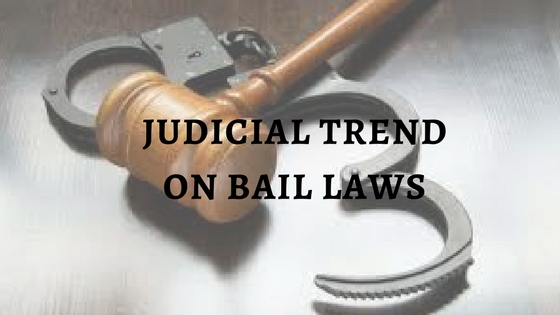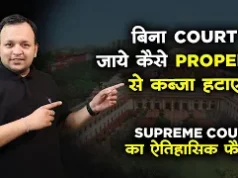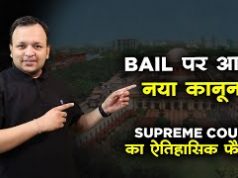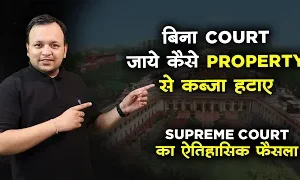Aapka Consultant Judgment Series- In this series, we are providing case analysis of Landmark Judgments of Hon’ble Supreme Court of India.
Moti Ram & Ors. v. State of Madhya Pradesh
AIR 1978 SC 1594: (1978) 4 SCC 47
JUDGES: V.R. Krishnaiyer and D.A. Desai
Date of Decision: 24-08-1978
FACTS:-
The facts were that the accused-petitioner Moti Ram was a poor mason who was convicted for an offence. The Supreme Court passed an order, referring the same to the Chief Judicial Magistrate to enlarge him on bail without making any specifications in regard to sureties or bail bonds. The CJM ordered a sum of Rs. 10,000/- to be paid as the bail benefit and also passed an odd order refusing to accept the sureties of the petitioner’s brother as he and his assets were in another district. When the Court’s order for release was frustrated by the Chief Judicial Magistrate’s intransigence, the petitioner moved this Court to modify the original order to the extent that the petitioner be released on furnishing the surety of Rs. 2,000/- on or executing a personal bond.
ISSUE:-
Three legal issues have been framed by the hon’ble Court in this case, i.e.,
- Can the Court, under the Code of Criminal Procedure, enlarge, on his own bond without sureties, a person undergoing incarceration for a non-bailable offence either as under trial or as convict who has appealed or sought special leave?
- If the Court decides to grant bail with sureties, what criteria should guide it in quantifying the amount of bail?
- Is it within the power of the Court to reject a surety because he or his estate is situated in a different district or State?
JUDGMENT:-
The Hon’ble Supreme Court, while answering on the first issue, interpreted certain provisions of the Code. It states that S. 436 of the code speaks about bail but the proviso makes a contradistinction between bail and own bond without sureties. Here, bail suggests ‘with or without sureties’. S. 437(2) of the code suggests release, on undertaking to appear when directed, without production of sureties. S. 441(1) and 445 of the code also suggests duty for bond with or without sureties. It uses the word ‘bail’ and ‘own bond’ as antithetical, if interpreted liberally. Also as per S. 389 of the code, the Court of Appeal may release a convict on his own bond without sureties. It is not the court’s status but the applicant’s guilt status that is germane.
While answering to the second issue, the Court stated that when sureties were to be demanded from the person who is an under trial prisoner or a convicted person or who has appealed, the sum to be paid by the said persons should be insisted on are dependent on variables.
Lastly, while answering to the third issue in positive, the Court stated that it is not within the power of the Court to reject the sureties because the person or his estate is situated in a different district or State. The Court observed that Article 14 of the Constitution protects Indians within the territory of India. Similarly, Article 350 sanctions representation of any person to any authority, including a Court, for seeking redressal of his grievances in any language used in the Union of India. Equality before law under Article 14 envisages that even a Vakalat or affirmation made in any state language will be accepted everywhere in within the territory of India, condition is where a valid legislation to the contrary exists.
This has been done to save the poor and indigent persons who could not afford to procure sureties for their bail. The Court observed that ‘Social Justice is the signature tune of our Constitution and the little man in peril of losing his liberty is the consumer of social justice’. The bail can be numbled or it will be inconvenient if the court will be powerless to dispense with surety. The problem is basically one of human rights, especially freedom, which necessitates the Courts to dispense with such anomalies and adopt a fair procedure which has a creative connotation. Bail includes release on one’s own bond, with or without sureties, which describes a liberal interpretation in the area of social justice. The Court said that the Judges should be more inclined towards bail and not jail.
HELD:-
The Court held that bail covers both – release on one’s own bond, with or without sureties. This has been done to save the poor and indigent persons who could not afford to furnish sureties. The Supreme Court mandated the magistrate to release the petitioner on his own bond for a sum of Rs. 1,000/- respectively.
To Get Legal Opinion from Advocates/ Legal Experts, Please click here
To Get Legal Opinion from Retired Hon’ble Judges, Please click here












